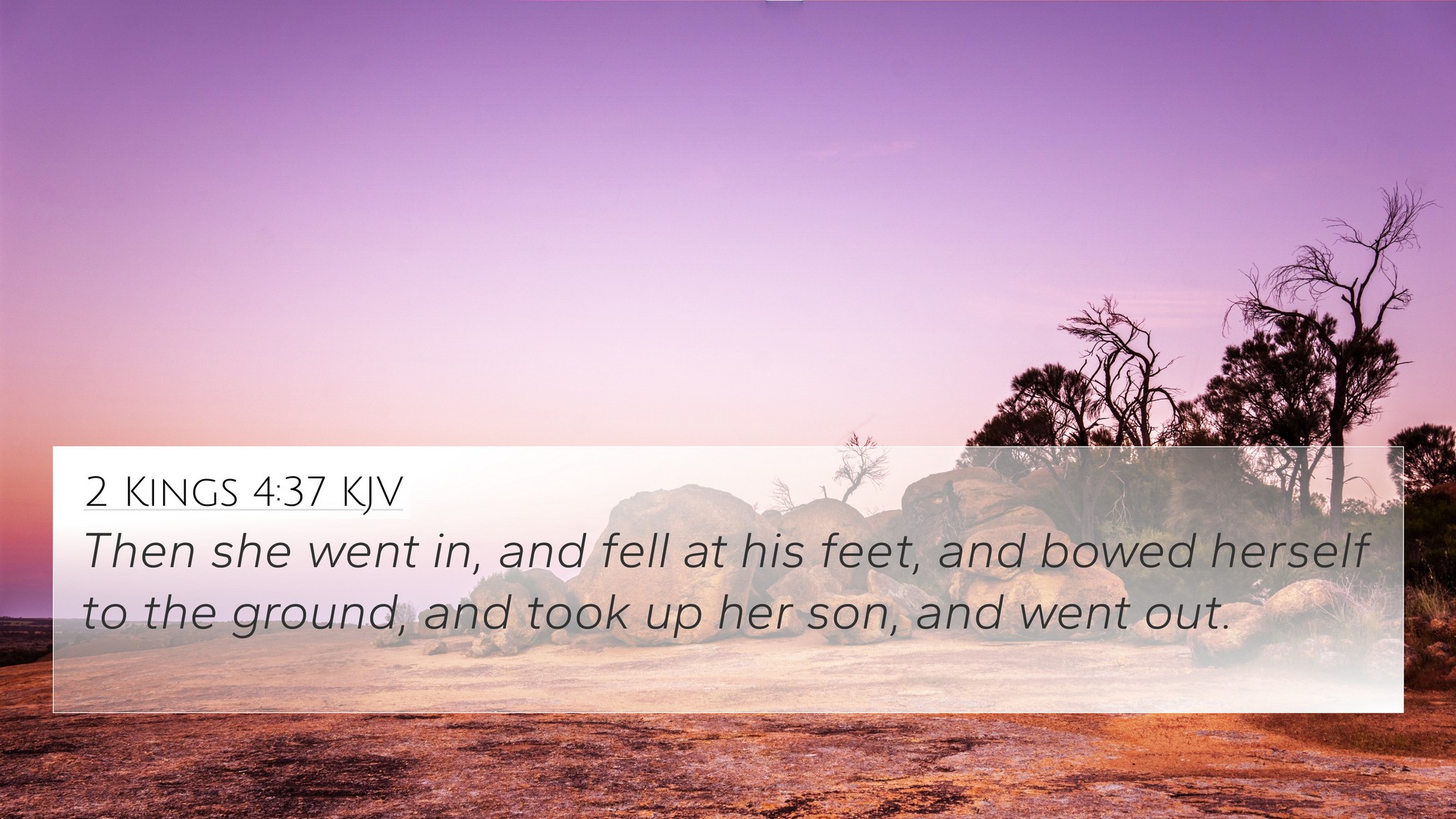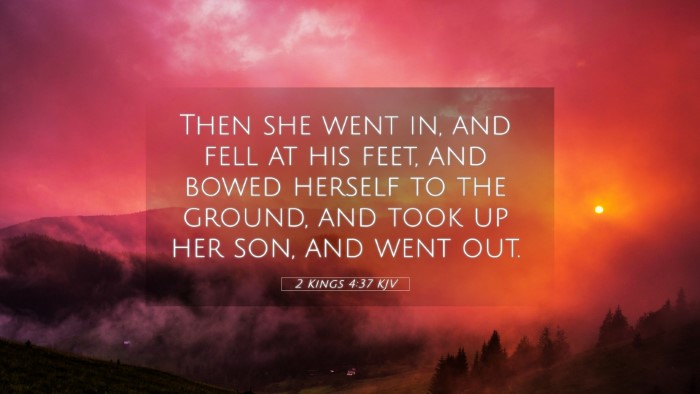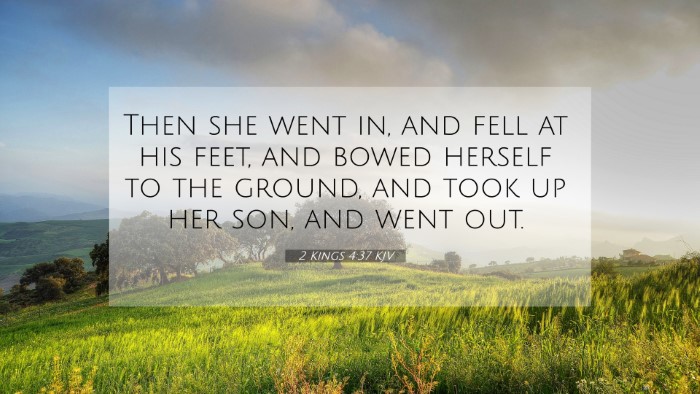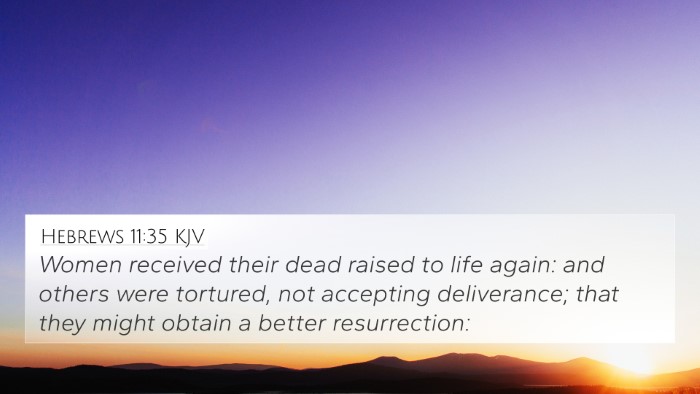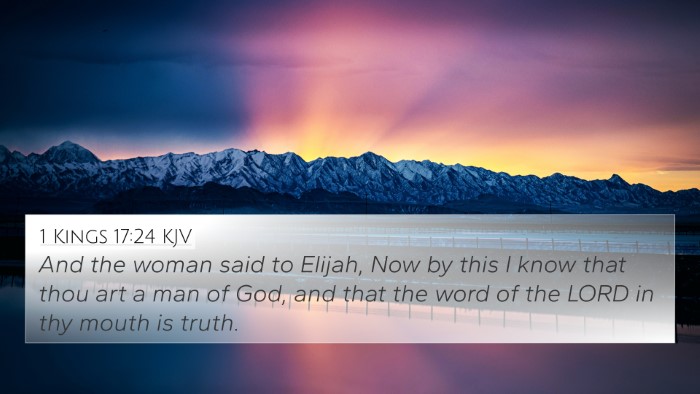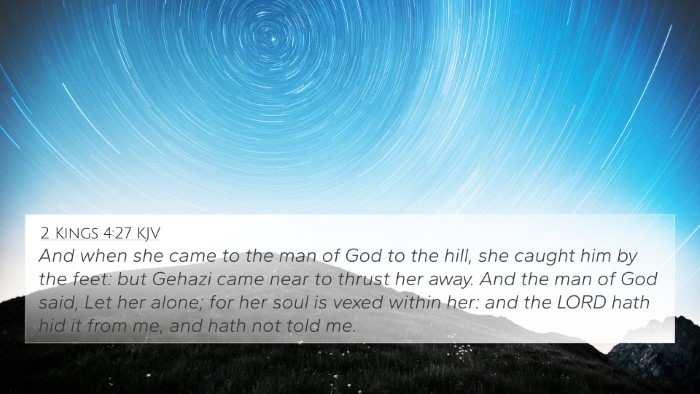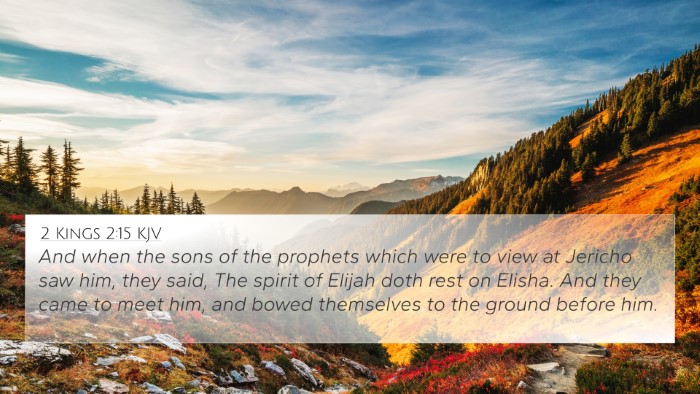Understanding 2 Kings 4:37
2 Kings 4:37 states: "Now she went in and fell at his feet, and bowed to the ground; then she picked up her son and went out."
This verse encapsulates a profound moment of emotional release and restoration for the Shunammite woman, who received her son back to life through the prophet Elisha. The narrative revolves around significant biblical themes such as divine intervention, faith, and the power of God over death.
Context and Analysis
The broader context of this verse is essential in understanding its significance. The story is part of a series of miracles performed by Elisha, showcasing God's compassion and the fulfillment of promises to those who exhibit unwavering faith.
The Shunammite woman, previously unable to bear children, had her desires fulfilled through God's miraculous power, emphasizing not only her faith but also God's providence. This moment emphasizes contextual themes of hope amidst despair, pointing to a God who listens and acts on behalf of His people.
Commentaries Overview
Insights from notable commentaries offer depth to the interpretation of this verse:
-
Matthew Henry: Reflects on the deep emotional landscape of the Shunammite woman, highlighting her humble posture before Elisha as a sign of gratitude and reverence. The lesson here emphasizes the importance of acknowledging divine intervention in personal victories.
-
Albert Barnes: Focuses on the miraculous restoration of the woman's son, stressing how this event mirrors the resurrection power that God possesses. He elaborates on the theological implications of God's capability to reverse the irreversible, highlighting the faith that precedes miracles.
-
Adam Clarke: Analyzes the significance of the woman's actions after her son is restored. Clarke elaborates on the cultural aspects of biblical miracles and emphasizes the importance of community recognition in the acknowledgement of divine victory.
Bible Verse Cross-References
The connections between Bible verses offer deeper insight and thematic unity. Below are relevant cross-references that illustrate the interconnected nature of scripture:
-
1 Kings 17:22: This verse details another miracle performed by Elijah, which speaks to God’s authority over life and death.
-
John 11:43-44: The resurrection of Lazarus parallels the theme of using faith to overcome death, emphasizing the power of Jesus in granting life.
-
Hebrews 11:35: Acts of faith, similar to the Shunammite woman's, are exemplified here as many received their loved ones back through miraculous acts.
-
Matthew 9:25: The resurrection of a girl by Jesus parallels this incident, reinforcing the theme of faith leading to miraculous outcomes.
-
Luke 7:14-15: Jesus raises the widow's son, demonstrating His compassion and divine power in resurrecting lives, akin to the miracle experienced by the Shunammite woman.
-
2 Timothy 1:7: Emphasizes God not giving a spirit of fear, aligning with the Shunammite's courageous approach to Elisha in a time of despair.
-
Psalms 30:2: This verse highlights God's transformative power that echoes the themes present in 2 Kings 4:37 where grace and restoration are evident.
Thematic Connections
Thematically, this passage resonates with elements of hope, faith, and the divine response to human needs. It serves to remind believers of God's present help in times of struggle and affliction.
-
Faith amidst Trials: The unwavering faith of the Shunammite woman acts as a testament to trusting God even in seemingly hopeless situations.
-
God's Compassion: His willingness to restore life to her son illustrates His deep compassion and willingness to intervene.
-
Divine Miracles: Instances of miraculous acts throughout the Bible serve to bolster faith in God's omnipotence.
Practical Applications
Drawing practical applications from 2 Kings 4:37 involves recognizing the value of faith, humility, and trust in God's goodness during our trials.
-
Encouragement in Despair: Just as the Shunammite woman sought out Elisha, believers are reminded to pursue God's guidance in difficult situations.
-
Importance of Prayer: Her initial requests to God through prayer denote a personal relationship; the verse encourages the same for modern believers.
-
Celebration of God's Work: Recognizing and testifying about God’s interventions in our lives can provide hope and encouragement to others within our communities.
Conclusion
In summary, 2 Kings 4:37 encompasses significant themes of faith, restoration, and divine intervention. The commentaries highlight the emotional and spiritual dynamics at play for the Shunammite woman and underscore the broader biblical promise of resurrection and hope. By engaging with cross-referenced scriptures, one can see the continuity of God's actions throughout the biblical narrative, encouraging believers to trust in His capacity to act within their lives today.
As you explore the rich tapestry of scriptural connections, remember the power of God's word in redefining lives. 2 Kings 4:37 invites us to view our challenges through the lens of faith, enabling us to encounter the miraculous forms of God's love and restoration in our own situations.
